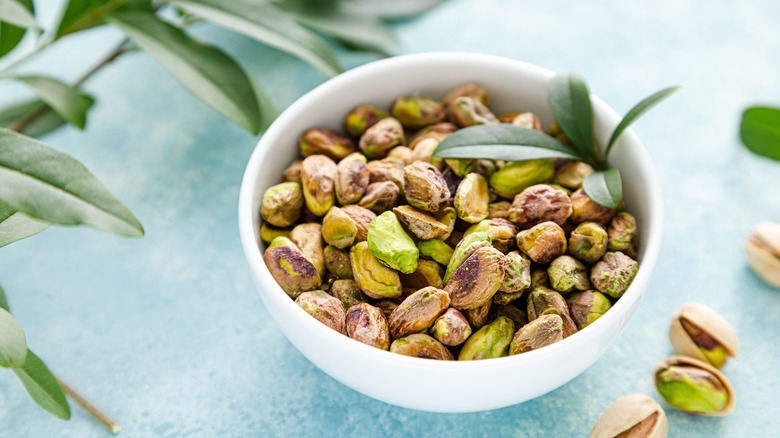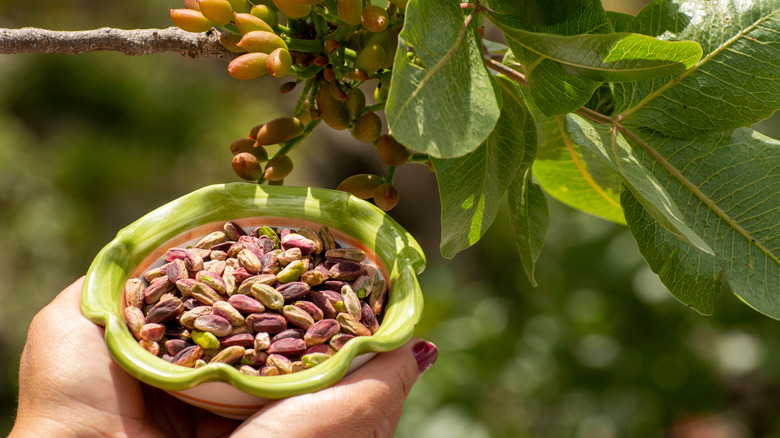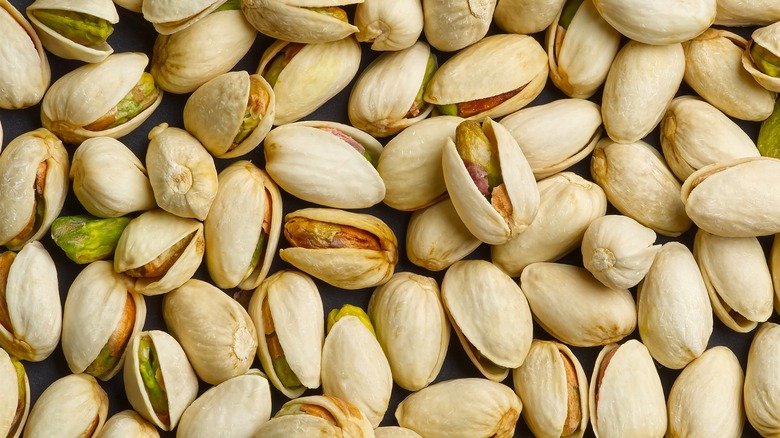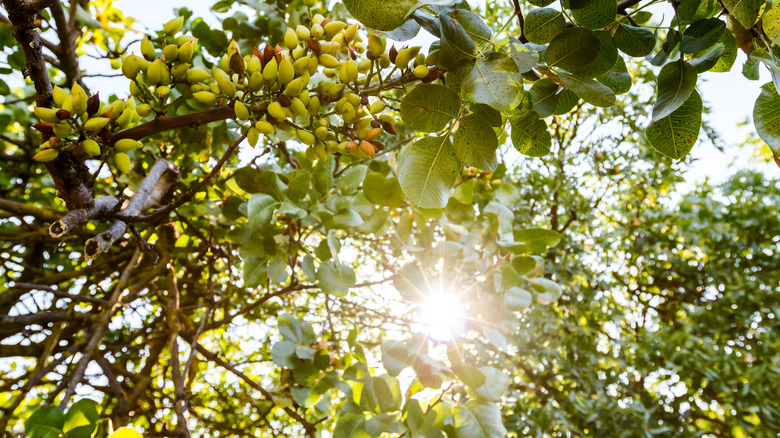Most Of The Pistachios In The US Come From This State
Pistachios bring a little joy wherever they go. In Iran they are called the "smiling nut," in China they are known as the "happy nut" but whatever you call them, these little green guys are always cracking up (via Self). Seriously, pistachios are known for their wide smiles; Chicago Health Online says that the nuts themselves have a shell that cracks open at the beginning of autumn when the meat inside is ready to eat. Even though the pistachio "smile" is cute, it can also be detrimental. Since the nut is already cracked open, pistachio farmers have to move quickly to ensure birds or other animals don't harvest their crop before they do, per West Coast Nut.
Pistachios are one of the most popular types of nuts but are also one of the most expensive. The Cold Wire explains that the pistachio's long growing season, low production, and high demand keep this snack's price remarkably high, despite the fact that it's grown in the U.S.A.'s own backyard.
What are pistachios?
Pistachios are a satisfying snack and their sweet earthy flavor lends well to desserts like sweet and sticky baklava, pistachio pudding, and a pretty popular ice cream flavor. They are also wonderful savory snacks when cracked open and eaten raw. And the best part about these little guys is that, unlike money, pistachios grow on trees.
According to The Tree Center, pistachio trees are hardy. They can handle extreme winters, but don't handle humidity as well, and instead prefer hot, dry, desert-like summers. A fully developed pistachio tree can grow over 100 pounds of nuts in a full crop rotation. The nuts are then harvested between the months of September and October using a machine that shakes the trees and catches the falling nuts (via YouTube)
The Cleveland Clinic states that you should absolutely be incorporating pistachios into your diet. The clinic claims that by eating some every day, you'll reduce the risk of cancer, heart disease, and respiratory diseases. The nut is additionally a solid source of protein, nutrients, vitamins, and a wealth of antioxidants.
The history of pistachios
As stated above, pistachios love to grow in warm dry climates, so it will come as no surprise to you that the nuts are believed to be native to what is now modern-day Iran, and they've been growing in that particular corner of the world for thousands of years (via Britannica). The American Pistachio Growers claim that there is a record in the Old Testament of pistachios thriving in the Middle East and that the Queen of Sheba coveted the small green nuts.
Thanks to Alexander the Great conquering much of the Arab world, North Africa, and some of Central Asia from 334 to 323 B.C., pistachios were brought to Southern Europe and cultivated in Greece, then spread to Italy and Spain later on. The pistachio took many more centuries to make its way further North or West.
According to Heart of the Desert, it is estimated that the existence of pistachios stretches as far back as 6750 B.C., but it wasn't until the 1880s that pistachios made waves in the United States. The pistachio made its way to California in 1854 and in 1875 trees were imported from the old world and planted in Sonoma, California. Because of California's warm climate, the trees took root and became a part of the state's crop production.
The Golden State pistachio
Pistachios are a well-beloved nut in the United States, which is great because the country produces a lot of them. According to Statista, in 2021/2022, the U.S. was responsible for 67% of worldwide pistachio production, making America the global leader in pistachio production. If you're thinking, based on these numbers, that you should have encountered many more pistachio trees by now, then you don't spend a lot of time in California, where pistachios are grown en masse, per Food Print.
Along the dry, drought-ridden landscape of the Southwestern coastline thrives one very tough nut. The Food Print says that today, California is solely responsible for 99% of the United States' pistachio production. Other states such as Arizona and New Mexico also grow these nuts, but only make up 1% of domestic production. America is estimated to harvest over 80 million pounds of pistachios every year, meaning that California alone supplies the world with just over 79 million pounds of pistachios annually — now that's a nutty fact.



